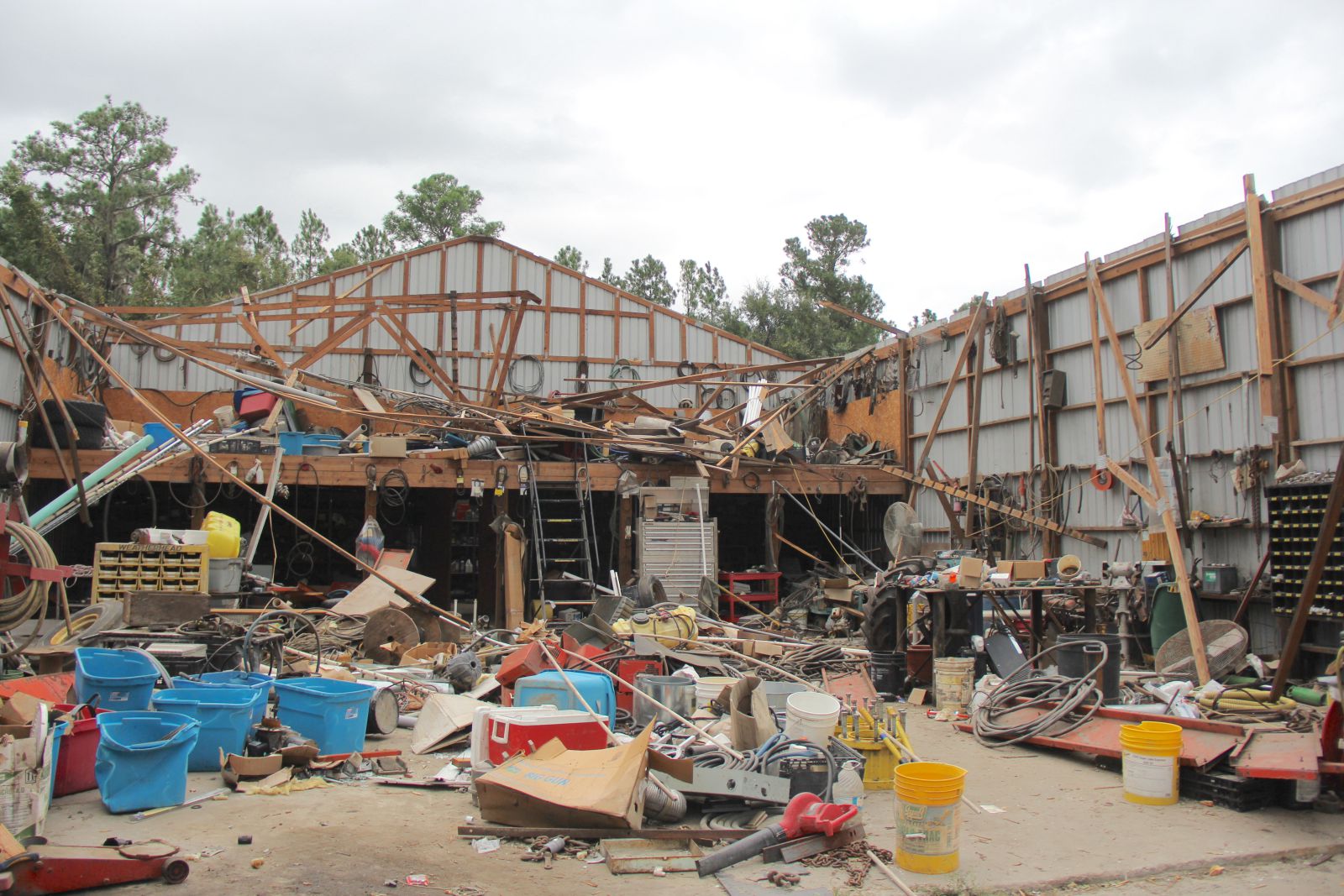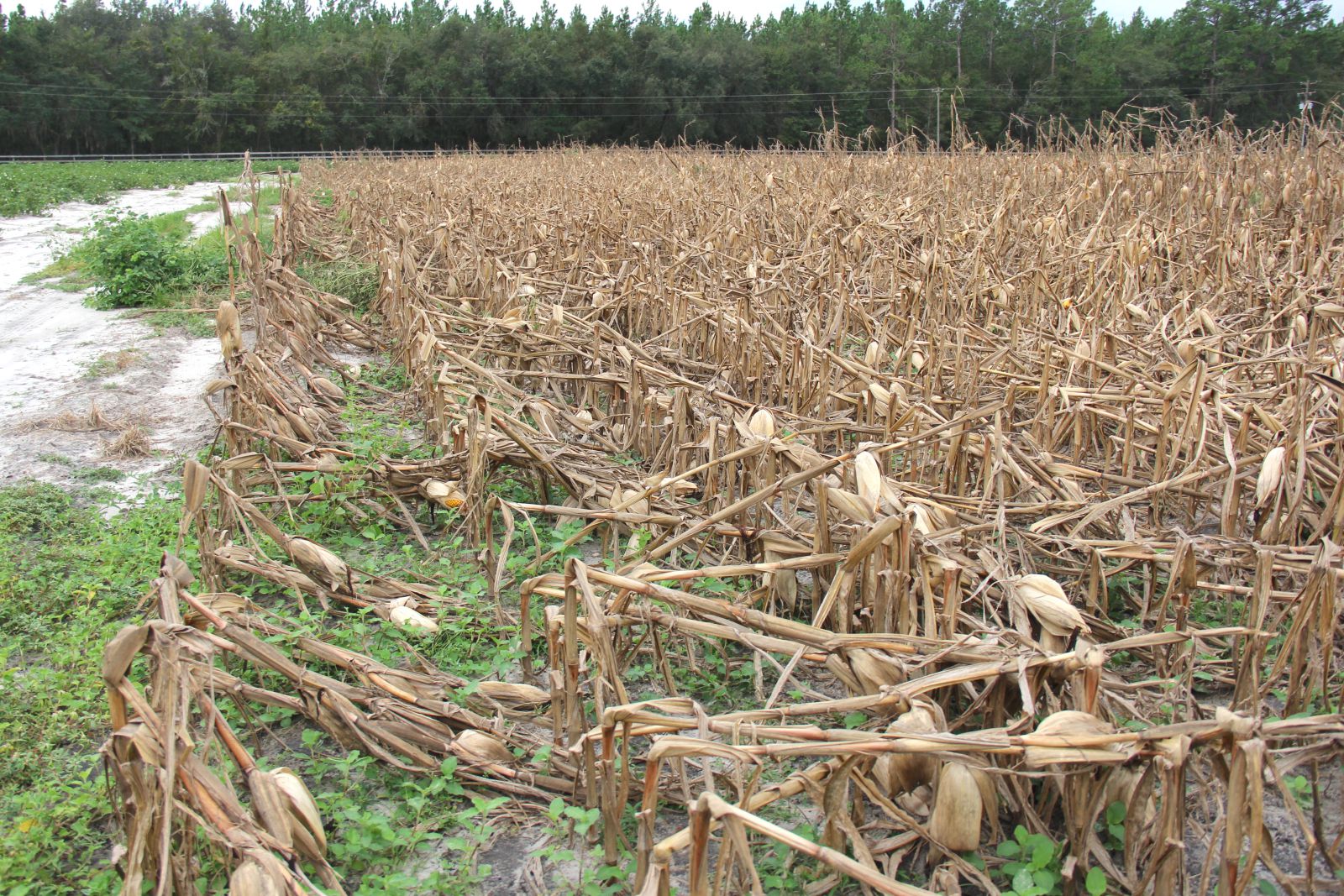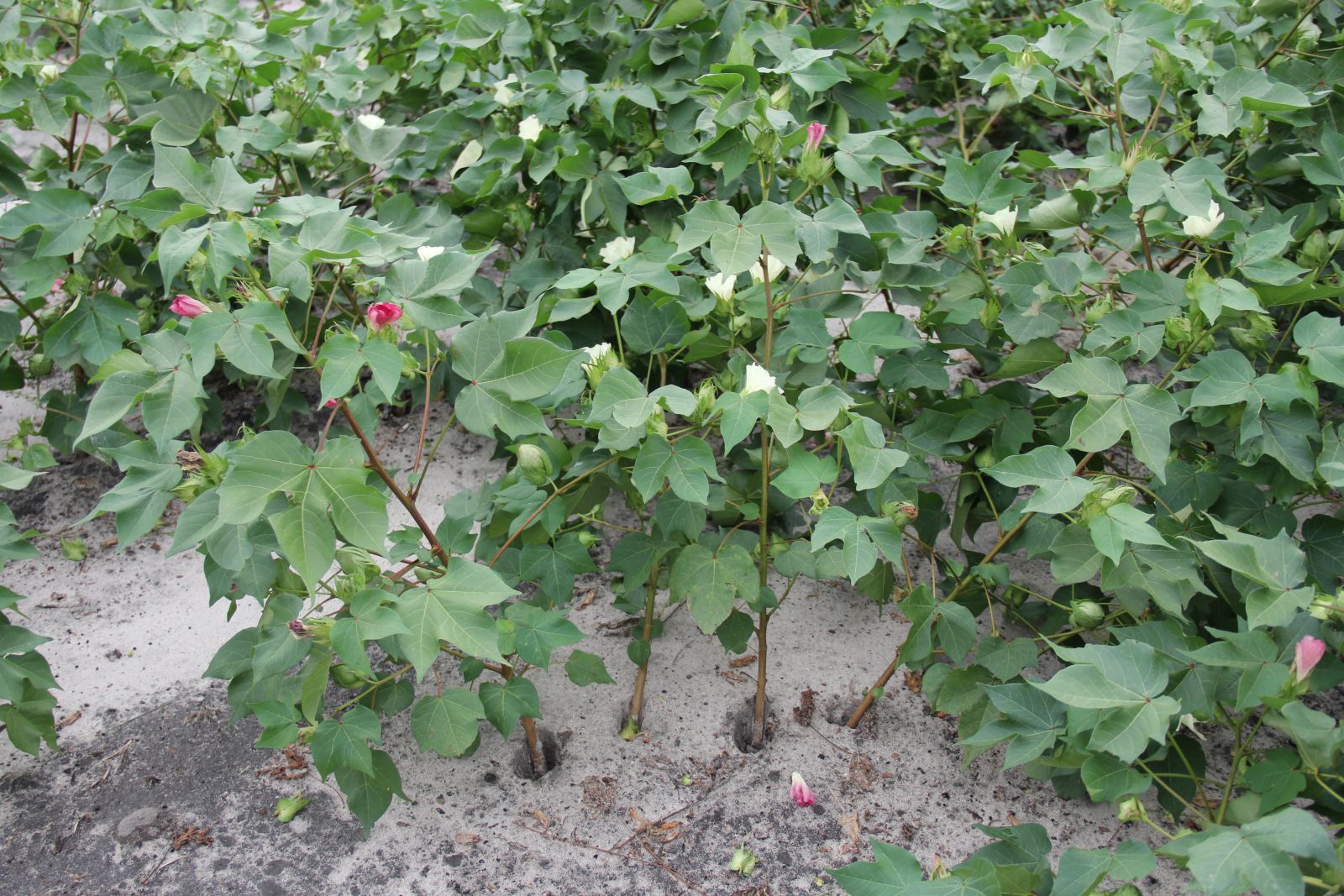GFB News Magazine
Hurricane Idalia hits Southeast Georgia farmers hard
by Jennifer Whittaker
Posted on November 23, 2023 11:04 AM
Article & photos By Jennifer Whittaker
Hurricane Idalia left bitter bruises on Georgia farms after sweeping across Southeast Georgia Aug. 30. Idalia was a Category 2 storm when its eye blew into Lowndes County about 10 a.m. that day. Category 2 storms have sustained winds of 96-110 mph according to the National Hurricane Center.
In addition to the damage detailed below, many farmers had to run generators for days until power was restored to keep their dairy and swine barns, poultry houses, tobacco curing barns and wells operating. Some poultry flocks in Coffee County died due to a loss of power.
On Nov. 3, the USDA issued a disaster declaration for 27 Georgia counties that suffered ag losses from Idalia. This declaration allows farmers and other eligible ag operations to apply for emergency disaster relief through the Farm Service Agency.
Counties to receive a primary designation are: Appling, Atkinson, Bacon, Ben Hill, Berrien, Brantley, Brooks, Bulloch, Candler, Clinch, Coffee, Cook, Echols, Evans, Irwin, Jeff Davis, Lanier, Lowndes, Montgomery, Pierce, Tattnall, Telfair, Thomas, Toombs, Ware, Wayne and Wheeler. Contiguous counties eligible for assistance are: Bryan, Camden, Charlton, Colquitt, Dodge, Effingham, Emanuel, Glynn, Grady, Jenkins, Laurens, Liberty, Long, McIntosh, Mitchell, Screven, Tift, Treutlen, Turner and Wilcox. The application deadline for assistance under this declaration is July 3, 2024.
The Georgia Department of Agriculture says these 27 counties are home to more than 7,800 ag operations that farm more than 2.3 million acres with a farm-gate value of over $3.5 billion. FSA and UGA Extension were still calculating the exact economic loss Idalia caused at press time.
On Nov. 21 the USDA issued two separate releases saying that producers in the following Georgia counties are also eligible for disaster relief coverage under a Presidental Disaster Designation issued by the Federal Emergency Management Agency. Per the first announcement, primary eligible counties are: Burke, Montgomery, Toombs and Treutlen. Contiguous counties also eligible to apply for FEMA assistance are: Jefferson, Johnson, Laurens, Richmond, Screven and Wheeler. June 3, 2024, is the application deadline for aid under this designation.
In the second release USDA issued Nov. 21 announcing a Presidental Disaster Designation designated by FEMA, primary eligible counties are: Appling, Atkinson, Bacon, Berrien, Brantley, Brooks, Bulloch, Camden, Candler, Charlton, Clinch, Coffee, Colquitt, Echols, Emanuel, Jeff Davis, Jenkins, Lanier, Pierce, Screven, Tattnall, Thomas, Tift, Ware and Wayne. Contiguous eligible counties are: Ben Hill, Bryan, Cook, Effingham, Evans, Glynn, Grady, Irwin, Liberty, Long, Lowndes, McIntosh, Mitchell, Telfair, Turner and Worth. May 9, 2024, is the application deadline for aid under this designation.
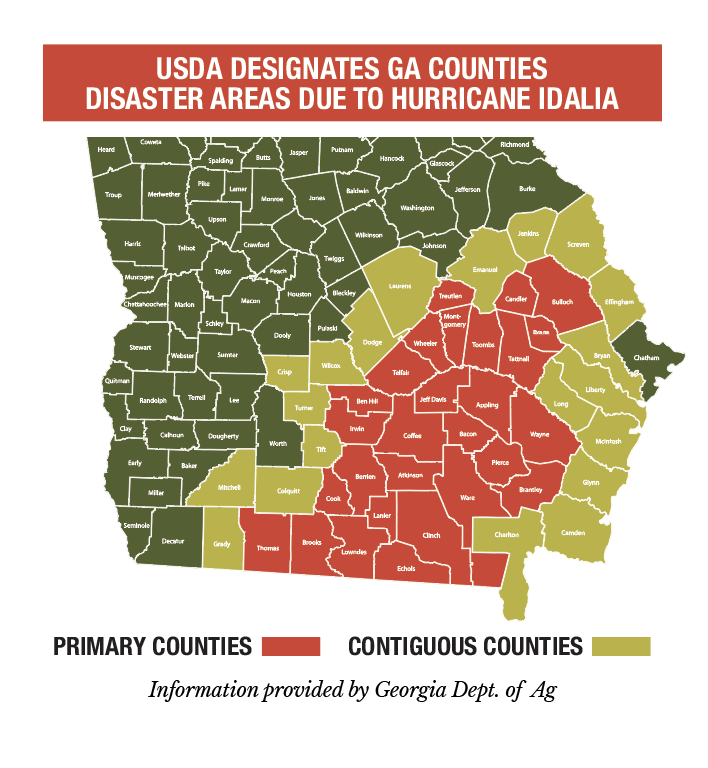
Editor's Note: The above graphic illustrates the USDA disaster designation issued on Nov. 3 and does not include all of the primary & contiguous counties that received a presidential disaster designation from the Federal Emergency Management Agency that USDA announced Nov. 21.
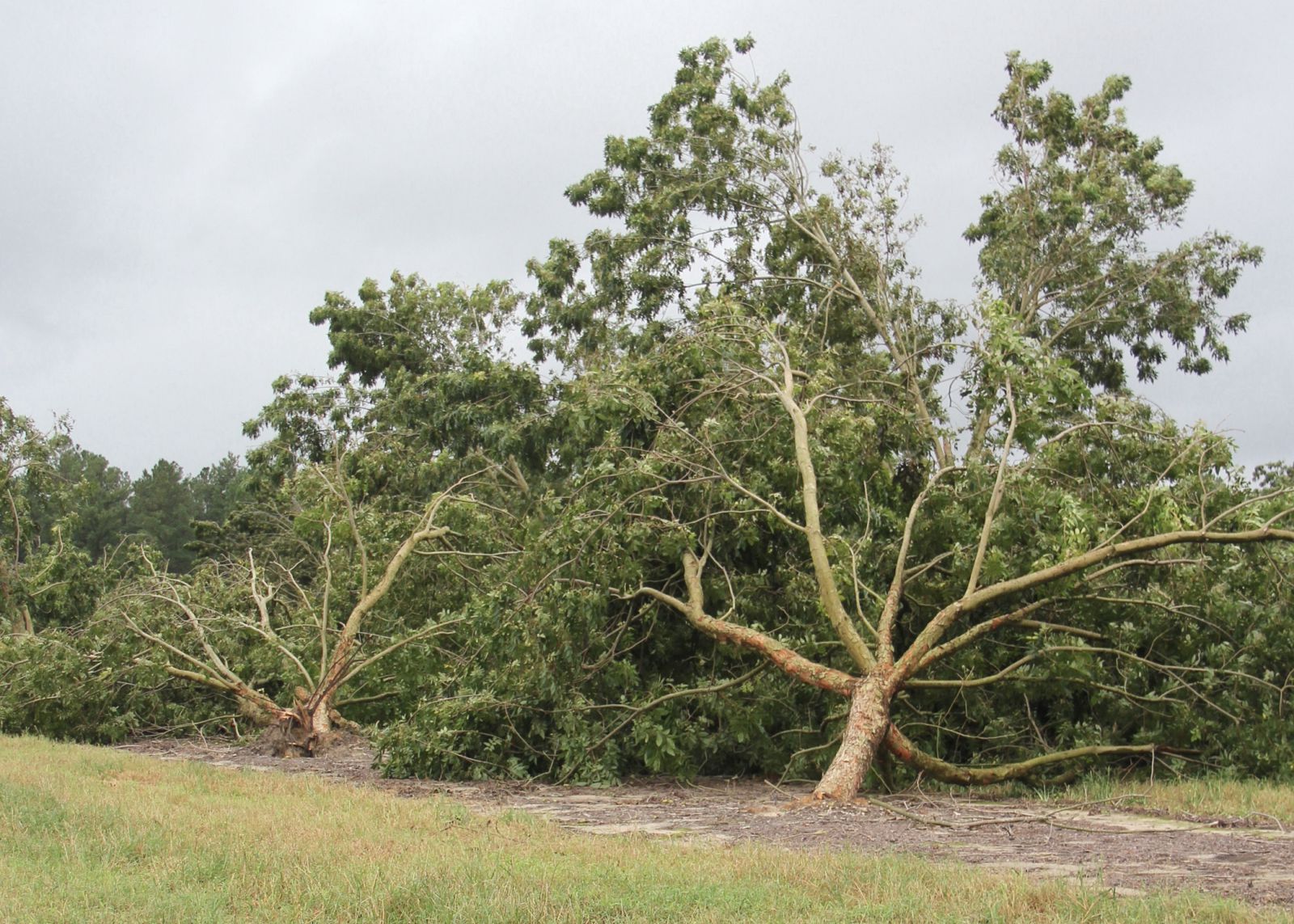
Pecan damage
Georgia pecan growers were a month away from beginning their harvest when Idalia hit. The trees were laden with still-maturing nuts and the heavy green hulls that hold the nuts until they open and drop the unshelled pecans to the ground.
Assessments indicate Idalia did the most damage to orchards in Thomas, Brooks, Lowndes, Berrien, Cook, Irwin, Lanier, Ware and Pierce counties, according to UGA Extension Pecan Specialist Lenny Wells. Pecan orchards were also hit in counties extending toward Savannah, but the damage was more sporadic and less severe, Wells said.
“Thousands of trees have been lost from the state line up to Berrien and Cook counties. Several large growers have reported an estimated 10,000 to 15,000 trees down from their orchards,” Wells said.
Buck Paulk of Shiloh Pecan Farms & Shiloh Pecan Farms Nursery headquartered in Lowndes County and lifelong growers James and Linda Exum of Brooks County were among pecan growers left with uprooted trees and crop loss.
“We’ve had damage from other tropical storms, but for us it’s the worst we’ve had in my lifetime,” said Paulk. “I’m thinking that as of today [Sept. 1] we had about 10,000 trees uprooted.”
In the most severely impacted area, Wells said the percentage of downed trees in damaged orchards ranges from 30%-80% of total orchard trees. Most of the trees uprooted or left leaning were 20 years and under, Wells said.
“As the winds push and pull these trees, it’s like grabbing a fence post, and then they topple over,” Paulk said. “Especially trees under ten years old. These trees were loaded with a good crop, and they can’t withstand 70 mile per hour winds combined with six inches of rain.”
Paulk said he would stand trees left leaning less than 30 degrees back up to see if they will live.
James Exum estimates Idalia uprooted about 400 trees on his 200 acres of orchards located in Morven.
“You not only lose the tree, but you lose its future production,” James explained. “It’ll take 20 years to get back to where we were the day before the hurricane.”
Linda Exum said, "Some of this damage James and I will never see the farm recover from in our lifetime."
Growers in Idalia’s path also had crop loss from nuts being blown to the ground and limbs, heavy with nuts breaking.
“These trees were at their most vulnerable stage because of all the nuts on them and the nuts were still in the hulls maturing,” Paulk explained. “Even if a tree wasn’t blown over or left leaning, I think about half of our crop is on the ground.”
In the hardest hit counties, crop loss could range between 50 to 80% depending on the orchard, Wells said.
Wells estimated Georgia pecan orchards would have produced between 85-100 million pounds this fall before Idalia struck.
“This was going to be a slightly below average crop overall even before the storm,” Wells said. “As far as crop loss is concerned, this region probably produces about one-third of the state crop.”
Tobacco damage
Georgia tobacco growers had finished harvesting most of their crop when Idalia hit. Growers were in the third stage of their harvest, when they remove the remaining leaves from the top of the tobacco stalk.
The percentage of the crop lost to Idalia varied depending on how many acres farmers had left to harvest and severity of wind damage. Daniel Johnson, who grows tobacco in Pierce and Bacon counties, had 65 acres left to harvest on Aug. 30 and estimates he lost 20% of the crop on this acreage.
In Echols County, Stanley Corbett grows tobacco and other row crops with his sons Bo, Clay and Cody. The Corbetts had about 15 acres of tobacco left to harvest when Idalia arrived. Fortunately, the Corbetts’ sandy soil doesn’t retain moisture long, so they were able to finish harvesting their crop on Sept. 2.
“Unharvested tobacco deteriorates fast after a tropical storm or hurricane comes through. We’ve learned from experience that you must get it harvested in five days after a storm,” Bo said.
For the Corbetts, and other growers who lost power during the storm, their biggest problem after Idalia passed was having enough generators to run fans on their tobacco curing barns to keep recently harvested tobacco from sweating and molding.
The Corbetts were without power for 37 hours so they rotated six generators among 40 of their curing barns that contained just-harvested, uncured tobacco to keep fans blowing outside air on the leaves so they wouldn’t sweat and mold. They stayed up around the clock, napping in their trucks when they could.
Damaged sheds & equipment
Although Idalia ripped the roof off the large shed where the Stanley Corbett family keeps their equipment parts, the Corbetts were thankful none of their 77 curing barns were damaged. Many of them were located yards away from the roofless parts shed.
“I’ve lived on this farm all my life – 64 years – and I don’t remember anything like this in my lifetime,” Stanley said. “If this was a Category One or Two hurricane, I feel for the people who have lived through a Category Four or Five. God took care of us. None of our family was hurt and none of the tobacco barns where our crop is stored were hurt.”
Idalia did rip off the roof of their sprayer cab and mangled the top frame of one of their tobacco harvesters. Bo said both can be repaired.
Not far from the Corbetts, Idalia blew over an equipment shed and overturned a livestock hauling truck at cattle producer Mike Coggins’ farm.
Impact on row crops
The Corbetts managed to harvest five of their 300 acres of corn before the storm hit, so, Idalia flattened almost all their corn crop. Bo was hopeful the corn combine head would lift the flattened stalks so they could harvest most of the corn.
Berrien County farmer Morgan Hendley had his entire corn crop of about 300 acres blown over. He said he was going to harvest what was salvageable and come as close as he could to fulfilling his sales contracts.
Also in Berrien County, Terry Danforth estimated he lost 20-25% of the corn he grows to feed his pigs. He had to rotate generators among his swine houses to operate feed and watering systems.
Hendley said it was too early to tell about his peanut crop.
He noted a total of 10 inches of rain over two days, followed by intense heat, makes peanuts susceptible to disease.
“That environment is a feeding ground for white mold, and we can’t get in the field to spray it,” Hendley said.
Cotton growers in multiple counties across Southeast Georgia reported having cotton stalks left blown over or twisted at the roots.
Early maturing varieties may have had mature or almost mature bolls knocked off while later planted crops may have still been blooming and setting cotton bolls.
“Some was blown out on the ground,” Berrien County cotton grower Tim McMillan said. “Stalks are tangled up with each other. We won’t be able to spray with high boy. We’ll have to hire a plane.”
McMillan, who grows approximately 400 acres of cotton, said about 20% of the bolls were open when the storm came through.
Vegetable crop damage
Justin Corbett and his brother, Jared, farm together as Corbett Brothers Farms. They raise a variety of vegetables in Echols, Lowndes and Lanier counties and in Florida’s adjoining Madison and Hamilton counties. They are the nephews of Stanley Corbett mentioned earlier in this article.
Farms in each county had damage including wind-whipped broken plants, ripped plastic on the raised beds, and lack of power needed to run their irrigation systems.
When Idalia struck, the Corbett Brothers were a week away from harvesting their squash and eggplant crops.
They weren’t be able to sell any vegetables scarred by the wind or sand blasted.
Idalia’s winds randomly broke off large bell pepper plants that were about six weeks old when Idalia hit. Some plants were left leaning.
“We’re worried about yield loss for all our crops,” Justin said. We already have it hard enough with the thin profit margins we must work with, but to potentially lose a significant part of your crop is hard.”
In another huge field of pepper plants that were only two weeks old when Idalia struck Aug. 30. Justin Corbett estimated they lost 50% of their pepper plants to the storm.
Idalia ripped a lot of the plastic the Corbetts use to cover their raised vegetable beds. The plastic is important because it helps hold moisture in the bed when they water the plants with drip irrigation hoses and sheds rainwater off the vegetable beds to prevent the vegetable plants’ roots from getting too wet or drowning in the event of a heavy rainstorm.
Jay Stone contributed to this article.
